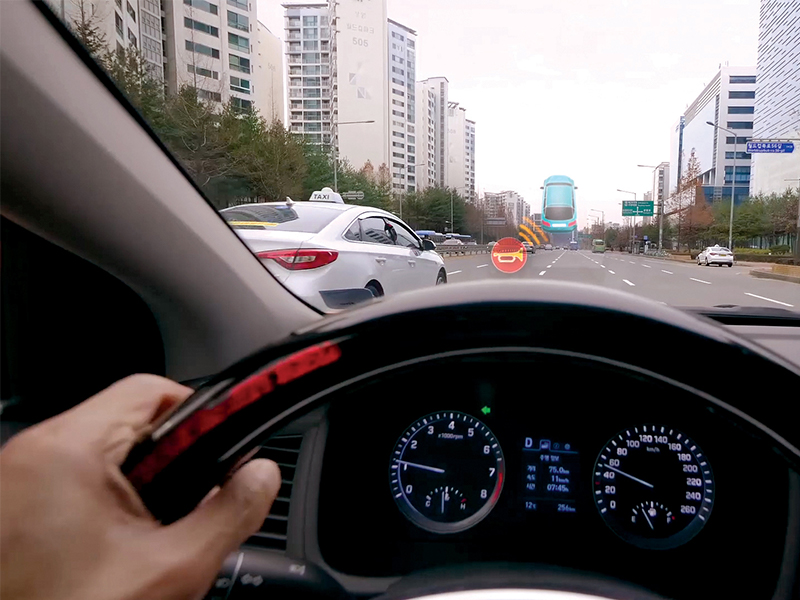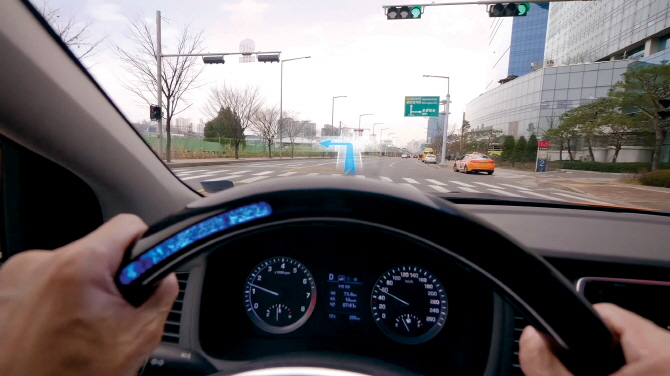Your hearing inevitably decreases with age, but at what point should your hearing stop you from driving? And when should you take action?
An estimated 43 percent of people over age 65 have some degree of hearing loss – a percentage that increases significantly among those 75 and older. Because this hearing loss is usually incremental, many people are unaware of it. And even among those who are, the average person waits about seven years before seeking help.
Despite advances in hearing aid technology and convenience, only a small percentage (around 25 percent) who could benefit from them actually use them.
That means that a whole lot of drivers with hearing impairments are out and about on the road.
A person with hearing impairment is less able to hear important safety cues on the road, such as another driver sounding the horn, a siren or the sound of another vehicle accelerating nearby. Street noise outside the vehicle and the noise of surrounding traffic can make it difficult even for drivers with good hearing to detect signals and for those with hearing loss, it presents an even greater challenge.
Can you drive if you’re deaf?
A common misconception is that if you can’t hear, you can’t drive. Deaf drivers use many aids to drive safely, including special devices that alert them when emergency vehicles sirens are sounding nearby and panoramic mirrors to provide a better sense of other vehicles and objects around their vehicle. They rely more heavily on visual cues and other sensations such as vibrations, skills usually not acquired by people with good hearing. In fact, it has been argued that deaf drivers are safer than their non-deaf counterparts due to their enhanced peripheral vision.
When must you wear a hearing aid while driving?
Under current standards put in place in October 2016, all commercial drivers who have more than 40 decibels of hearing loss are required to wear hearing aids, although Deaf Australia argues that wearing a hearing aid may not necessarily lead to safe driving. In fact, they say, it may lead to increased distraction due to sudden noises. Failure to wear hearing aids by these drivers will lead to licences being revoked, not renewed or reclassified to a lesser rating. Deaf Australia argues that wearing hearing aids should be an option for deaf and hard-of-hearing drivers, if they can demonstrate that they can drive safely without one.
Similar rules aren’t yet in place for private motorists, but the 40db level is a worthwhile guideline.
How does hearing impairment make you a more dangerous driver?
A study of older adults with hearing loss published by the American Geriatrics Society found that there was a significant correlation between hearing impairment and driving performance in the presence of distractions. The study concluded that older adults with hearing loss had greater difficulty driving when there were distractions such as conversation, reading street signs, listening to the radio or using a mobile phone (even hands-free) or navigation system.
The study found the additional effort of listening to a degraded auditory signal detracts drivers from other cognitive tasks, making it more difficult to pay attention to safety on the road.
“Hearing loss can be more mentally fatiguing than people realize,” says Stefanie Wolf, an audiologist with Audiology of Nassau County, Rockville Centre, N.Y. “If you’re trying to be a safe driver and it’s taking extra attention to hear signals and your surroundings, it can put you and other people on the road at risk.”
And you might not even realize the severity of the problem, Wolf says. “Hearing loss usually sneaks up on people very, very slowly, and one doesn’t know what one does not hear.” That’s why she recommends everyone 55 and older have a baseline hearing evaluation, then regular check-ups.
If your hearing is impaired, you’ll want to take these steps to be a safer driver:
Work with a hearing professional. Many of us know people who have hearing aids they never use because they found them more annoying or distracting than their hearing loss. Hearing-aid technology has improved enormously, but there’s still a learning and adaptation curve when you first get the devices, Wolf says. “Without the appropriate follow-up care and procedures, people have very little success with hearing aids. It takes time to learn how to use and fine-tune them. A doctor can help with the proper procedures.”
Have your vision checked. When one sense is diminished, the others pick up the slack, and vision is your most important sense behind the wheel. If your hearing is going, make sure your vision is as sharp as possible while you’re driving.
Expand your fields of view. Because you’re relying more on your eyes, you want to be able to take in as much visual information as possible. A clip-on, wide-angle rear view mirror can help you see more of and process your surroundings.
Reduce the noise. The more auditory distractions you have, the harder it will be to pick up the sounds you need to hear for safe driving. Keep the windows closed and lower the volume on the radio to help you concentrate. If you have hearing aids, you may be able to program them to use directional microphones or use a remote microphone accessory to hear the passengers in your car without needing them to speak loudly.
Minimise distractions. This is important for everyone, regardless of how well they can hear, and it’s even more essential if your hearing is diminished. Keep phone use to an absolute minimum. If you must talk to someone while you’re behind the wheel, hearing aids with Bluetooth technology that sync to your phone make it easier and safer to take a call.
Make your navigation tool easier to follow. We all rely on GPS navigation these days. If you have Bluetooth-enabled hearing aids, sync them to your device for turn-by-turn directions that are easier to hear. Place the GPS device or phone on a dashboard holder where you can easily see it without looking down, or consider one of the Heads Up Display (HUD) units or apps that project the directions onto your windscreen in your line of sight without obstructing your vision.
Keep an eye out for improved car technology. Car technology is advancing all the time, and drivers who have hearing impairments will soon have built-in assistance, Automobile manufacturers are developing technology that will give visual and haptic alerts (such as vibrations through the steering wheel or seat) when emergency vehicles are approaching.

Hyundai introduces hearing-impaired technology
Hyundai Motor Group announced its own Audio-Visual Conversion and Audio-Tactile Conversion technology for hearing impaired drivers earlier this year. Hearing-impaired drivers are dependent mainly on their sight and touch senses.
Hyundai created a way of communication for hearing impaired people that incorporates both internal and external sounds through tactile and visual means, expanding the freedom of mobility to all drivers regardless of physical limitations.
Hyundai, demonstrating the technology, has revealed a campaign called “Quiet Taxi” (see it here) that gives hope to drivers with impaired hearing.
Starting with an open invitation, stories were sent in by people from all over South Korea, and Daeho Lee was chosen as Seoul’s first-ever designated hearing-impaired taxi driver to showcase the driving assist technology.

Mr Lee, a hearing-impaired father of two children, recently began a new career as a taxi driver. He had difficulties with hearing and had to rely mainly on his sight. Problems arose with other drivers on the road when he was unable to hear horns or sirens of nearby vehicles. Additionally, relying constantly on his vision caused fatigue at many times the rate of the average driver.
The campaign video, along with the technology itself, will emphasise the value of “freedom of mobility”, demonstrating Hyundai’s efforts to enable those with reduced hearing to drive freely and safely using state-of-the-art innovative developments. As part of its goal, Hyundai also developed an application that enable communication between passengers and drivers who are hearing-impaired.
If you’d like to learn more about issues affecting older drivers, retirement, health, superannuation, travel and much, much more, subscribe to YourLifeChoices (it’s free) at https://www.yourlifechoices.com.au/ and listen to the podcast (including interviews with seniordriveraus) hosted by Kaye Fallick and John Deeks at https://www.yourlifechoices.com.au/podcasts/mind-your-own-retirement
